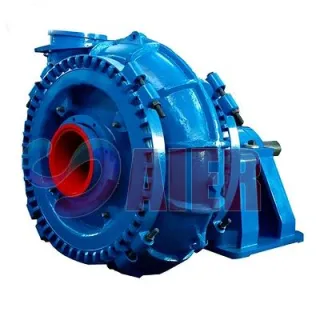Dec . 20, 2024 17:30 Back to list
slurry pump metal parts
Understanding the Importance of Metal Parts in Slurry Pumps
Slurry pumps are essential components in various industrial applications, particularly when transferring abrasive materials mixed with liquid. These pumps are designed to handle a complex mixture that includes solids, viscous materials, and slurries, which often contain particles that can significantly wear down pump components. Therefore, the selection of metal parts for slurry pumps is crucial to ensure their durability, efficiency, and long-term performance.
The Role of Metal Parts in Slurry Pumps
The effectiveness of a slurry pump relies heavily on its metal parts. These components include the casing, impeller, shaft, liners, and other critical elements that need to withstand severe operating conditions. The harsh nature of slurries, which often includes corrosive, abrasive, and high-density mixtures, necessitates the use of robust metals and alloys that can endure wear and tear.
1. Casing The casing serves as the pump's outer shell, providing structural integrity while containing the hydraulic fluid and solids. Ideally, casing materials should exhibit high hardness and toughness to resist impact and abrasion. Common materials include cast iron, stainless steel, and some alloys designed specifically for slurry applications.
2. Impeller The impeller is a vital component of the pump that transfers energy to the slurry, generating the necessary flow. Impellers must be designed to minimize wear while maximizing efficiency. Typically, various alloys and hardened metals are used to construct impellers, allowing them to maintain their shape and performance over time.
3. Shaft The shaft transmits the rotational energy from the motor to the impeller. It must possess excellent tensile strength and fatigue resistance to handle the stresses associated with high-speed operations. Materials suitable for shafts include carbon steel, stainless steel, and sometimes chrome alloyed steel to enhance durability.
4. Liners The internal surfaces of the pump wear rapidly due to the abrasive nature of the slurry. Liners protect the casing and reduce maintenance needs. They are often made from rubber or hard metal alloys, designed to be easily replaceable when wear occurs.
Material Selection Considerations
slurry pump metal parts

Choosing the right materials for slurry pump metal parts involves considering several factors, including
- Abrasiveness of the Slurry The level of abrasiveness will dictate the hardness and wear resistance required of the metal parts. For highly abrasive materials, harder alloys may be necessary.
- Corrosiveness In cases where the slurry contains corrosive agents, the metal parts must be made of corrosion-resistant materials such as stainless or duplex steels.
- Operating Temperature and Pressure The pump's working conditions will influence material selection. Metals must be chosen to perform effectively under specific temperature ranges and pressures.
Innovations in Metal Parts Design
Recent advancements in metallurgy and manufacturing processes have led to the development of new alloys and composite materials specifically tailored for slurry pumps. These innovations aim to enhance the operational lifetime and efficiency of the pumps, reducing downtime and maintenance costs.
For example, some manufacturers are now employing high-chromium white cast irons, which exhibit impressive hardness and wear resistance, particularly suited for applications with abrasive slurries. Additionally, emerging techniques, such as 3D printing, are being used to create complex pump components that improve performance while reducing wastage and production costs.
Conclusion
In summary, the metal parts of slurry pumps play a critical role in their operation and longevity. The ongoing development in materials science and engineering offers promising solutions to improve the durability and efficiency of these vital components. As industries continue to seek more reliable and efficient pumping solutions, the importance of selecting and designing the right metal parts for slurry pumps cannot be overstated. Investing in high-quality materials and innovative designs will ultimately lead to significant operational advantages, reduced maintenance costs, and increased productivity across various sectors where slurry pumps are utilized.
-
Top China Submersible Slurry Pump Supplier Durable & Efficient Solutions
NewsMay.17,2025
-
Submersible Pump Spares Manufacturer High-Quality & Durable Components
NewsMay.17,2025
-
Vertical Centrifugal Sump Pump Supplier China Factory Solutions
NewsMay.16,2025
-
Vertical Spindle Slurry Pump Suppliers High-Quality China Manufacturers
NewsMay.16,2025
-
High-Quality Casting Submersible Pump Parts Manufacturer Durable Solutions
NewsMay.16,2025
-
Vertical Sump & Mud Screw Slurry Pump Company Durable Solutions
NewsMay.15,2025
